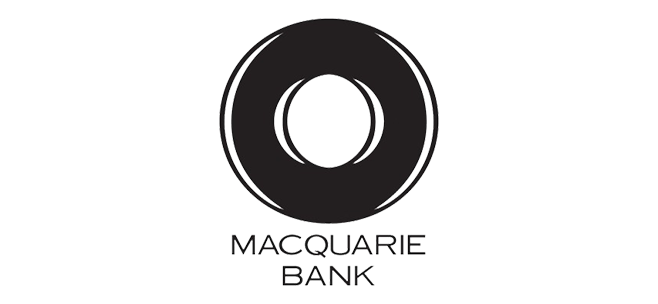In particular we focus on getting the loan structure right the first time, choosing which lenders to use in the right order (yes this is important) and finally getting our clients the best deal possible.
Genuine savings and non genuine savings

What does genuine savings mean?
Genuine savings is a term used by the lending industry when defining whether the funds to be used as a deposit by a proposed borrower (for a property purchase) have been genuinely saved over time.
Non genuine savings could be defined as any funds available to assist a proposed borrower with a purchase of a property that are not deemed to be genuine savings. Makes sense really but the tricky part is many lenders and the mortgage insurers disagree on what is and what isn't genuine savings!
Why do I need genuine savings?
To have your loan approved the majority of lenders require that you prove you have genuine savings if you are borrowing more than 80% of the value of a property or 85% or more in some cases. You will generally need to prove you have at least 5% of the proposed purchase price saved. Genuine savings is a way for the lender to verify the character of the proposed borrower. A borrower who has committed to saving is a much better bet than someone who hasn’t at all.
Every lender has different rules regarding savings requirements so please call us to discuss your situation in detail. We are experts in working out how to apply each lenders policy to maximise your options and provide you with the best loan possible from our panel of lenders.
Issues around genuine savings are one the most common reasons high loan to value ratio (LVR) loans end up being declined.
What is and isn’t considered genuine savings?
As mentioned every lender views genuine savings slightly differently and there are some grey areas when it comes to official policy. As a general rule if you’re in doubt the lender is more likely to be conservative than not and it won’t be considered genuine savings. Keeping a paper trail is very important!
Genuine savings must be:
- held in the name of at least one of the borrowers.
- liquid in nature ie they must be held in a bank savings account or similar or be investments that can be sold and converted to cash quickly such as publicly traded shares.
- clearly proved via documentation such as bank statements. The history of the genuine savings must be able to be verified by providing 3 months history depending on lender.
- not from the following sources a gift from family or friends, a windfall gain, an inheritance, or the proceeds of the sale of a non investment asset such as a car. Funds from the first home owners grant are excluded by all but one lender.
What if I don’t have genuine savings?
We have lots options available for borrowers who do not have genuine savings! For lower loan value ratio loans there are generally more options. Most lenders do not require genuine savings if you are borrowing 80% or less and there are also a few lenders that don’t verify savings for 85 90 and on occasion 95% home loans. The higher the loan to value ratio (maximum 95%) the more likely it is you will have to pay a higher interest rate and the stronger your application must be in other areas such as income and employment history.
Examples
Example 1: This is genuine savings
Property purchase price $500,000. Genuine savings required is therefore $25,000 (5% of $500,000).
- The proposed borrowers have around $50,500 sitting in an internet savings account now.
- 6 months ago the balance was $25,000.
- During the last 6 months they have not added to the balance themselves apart from the regular monthly interest they earn.
- They have just had a gift deposited to their account of $25,000 from family to help with the proposed purchase.
- They have not withdrawn any money from the account during this time.
This would be considered genuine savings with most lenders as they have held the required $25,000 (5%) for the last 6 months. Even though they haven’t added to it over this time from their own savings they have not spent it either. The gift does not affect their eligibility under the genuine savings policy; it would have to be disclosed as a gift though as the lender would require an explanation as to the source of the $25,000 deposit.
Example 2: This is not genuine savings
Property purchase price $500,000. Genuine savings required is therefore $25,000 (5% of $500,000).
- The proposed borrowers have around $48,000 sitting in an internet savings account now.
- 6 months ago the balance was $40,000.
- During the last 6 months they have added to the balance regularly with amounts of $500 / fortnight.
- During the last 6 months they made one withdrawal of $23,000 which they used to buy a car.
- They have just had a gift deposited to their account of $25,000 from family to help with the proposed purchase.
This would not be considered sufficient genuine savings with most lenders as although they have shown a good regular savings pattern they have not shown the full 5% genuine savings required. They started with $40,000 then withdrew $23,000 leaving them with $17,000 in savings. They were adding $500 / fortnight to this amount over the 6 months but that was insufficient to make up the $25,000 required.
In this case they would have been far better to get the gift from family to purchase the car so as to preserve their savings history.
Summary:
Everyone's situation is different, and the lending policies around genuine savings are very fluid. We are starting to see some relaxation of the genuine savings policies for owner occupiers with some lenders now considering rent paid as proof of a borrower’s capacity to repay a loan which in some cases is then being used as an alternative to needing to prove genuine savings. Of course the borrower still needs access to funds for their deposit, but they can come from a gift or inheritance for example.
Want to get a better idea where you stand? Contact Mortgage Experts.
Our Current Lender Panel










































